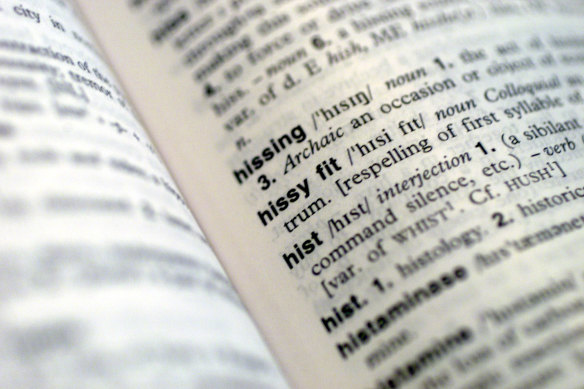By David Astle
You don’t often meet an eponym. That’s someone who’s a word in the dictionary, a concept, a syndrome, an effect. Or a number in the case of Professor Robin Dunbar, the Oxford anthropologist who calculated how many friends and connections our neurons can handle. Go on – have a guess.
Social media, you may suspect, has magnified the Dunbar number. But no. The man himself, who I met last week on radio, was proud to say his number hasn’t wavered over the years. Proud as the likes of Facebook, the Insta cliques, the Twitter tribes, have barely dented his tally of 150 people. The human animal, much like the Ethiopian gelada that Dunbar once studied, can only embed so many names in the neocortex.

You don’t often meet an eponym - someone who’s a word in the dictionary.Credit: Craig Abraham
“The figure looks implausibly small,” Dunbar recently conceded to The Guardian, “given we all live in cities now, but it turned out that this was the size of a typical community in hunter-gatherer societies. And the average village size in the Domesday Book is also 150 people.”
The coterie has a hierarchy, of course. Your so-called inner circle - alias, the shoulders you can cry on - add up to five, or ten if we’re counting shoulders. Next comes the ring of mates, the ten you see most weeks – the book club, school parents, workmates.
And so the circles go, radiating like pond ripples, in-laws and outliers included, strong ties and weak, reaching the Dunbar total best defined as “the number of people you would not feel embarrassed about joining uninvited for a drink if you happened to bump into them in a bar.” Chances are, you’ll remember their names at least.
Summoning your 150 contacts to mind, how many are eponyms? Maybe there’s a Nonna Jessie meatloaf, a Declan yawn, but few can claim eponymous status beyond our own ponds. Antonomasia goes close, where we drag someone’s name into a phrase. To do a Bradbury. To chuck a Kyrgios, do a Melba. The Bradman of golf. The Tony Abbott of diplomacy. The term derives from Greek, roughly translating as “name instead”, borrowing Errol Flynn to imply a Casanova.
But a purebred eponym? That’s rare. Writers get their toes wet, appearing as adjectives, such as Dickensian, Byronic or Austentatious. I fudged that last one, which shows how ungovernable this subset can be, tempting any critic to bung an -esque or -ish to a name to make a quality. Cute, but not a bona fide eponym, or not in my book.
Compare all those messy annexes to the hall of fame occupied by James Watt, Georg Ohm and their electrical mates. The flower power of Leonart Fuchs, Pierre Magnol and Joel Poinsett. Messers Biro and Leotard, Diesel and Guppy. The closeted women of Amelia Bloomer and Princess Fedora. Hen’s teeth across human history.
Impostors exist too, such as César de Choiseul, alias Count de Plessis-Praslin, whose chef invented the praline, yet the aristocrat grabbed the naming rights. Ditto for William Hoover who invested in the sucking engine created by James Spangler – a far better eponym had it gone that way.
Hence my glee to meet Mr Dunbar last week, as much a famous number as an esteemed figure. Imagine living beyond your countable years to perpetuate in the lexicon. I’d trade in my Bronze Medallion just to score a berth between “asti spumante” and “astonish” on page 83 in the Macquarie. That’s presuming I can fathom my definition, my connotation, what my sum of days amounts to. Maybe I should ask Professor Dunbar. I still have his number.
Read more Wordplay
- Boris Johnson’s demise proves a boon for the puzzle pages
- Barguess? Bargoose? Bargearse? The Late Show has nothing to do with it
- The best toy in a Kinder Surprise? A world of language
- Rabbitohs is or Storm are? A pesky plural can undo you
- My Gawd! This 100-year-old etiquette guide might still hold some useful lessons
- Computer mouses or computer mice? Let the people decide
To read more from Spectrum, visit our page here.
A cultural guide to going out and loving your city. Sign up to our Culture Fix newsletter here.